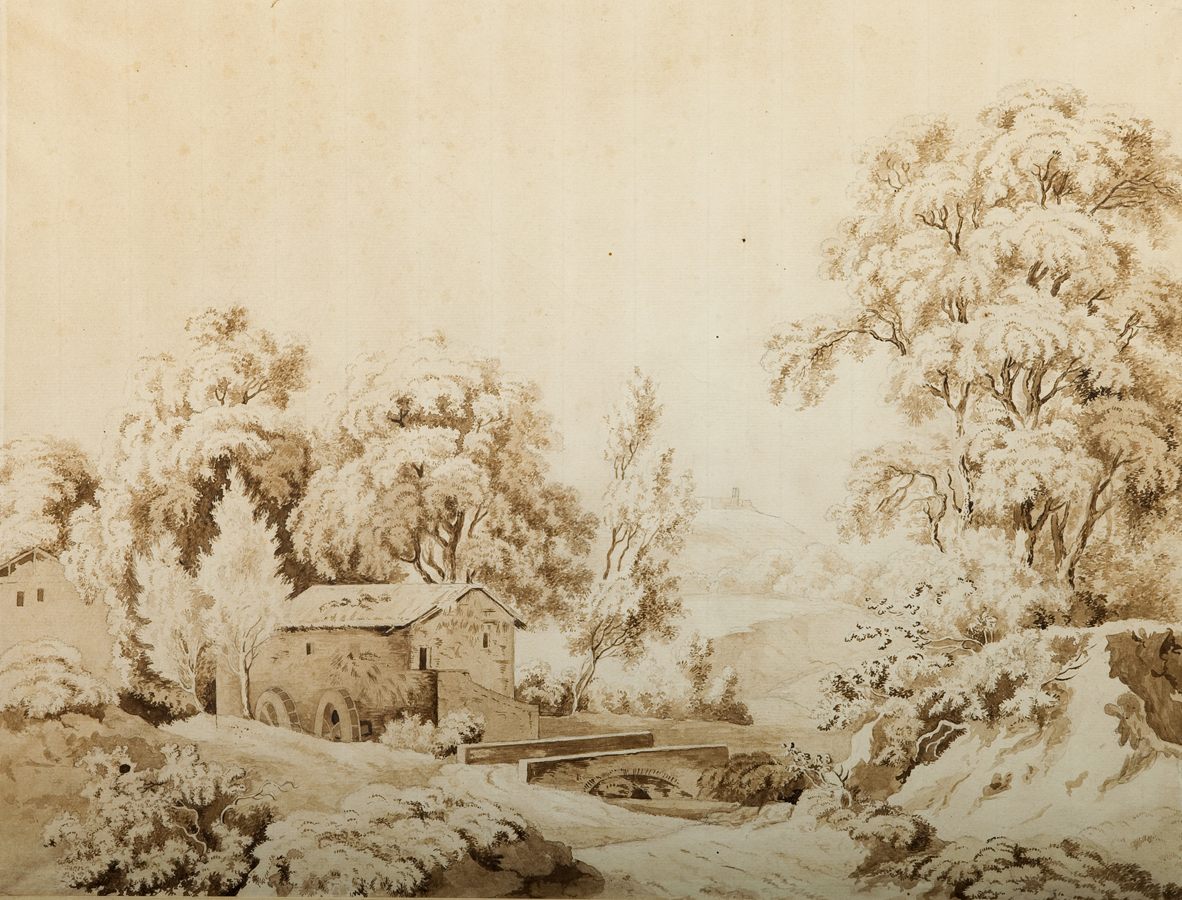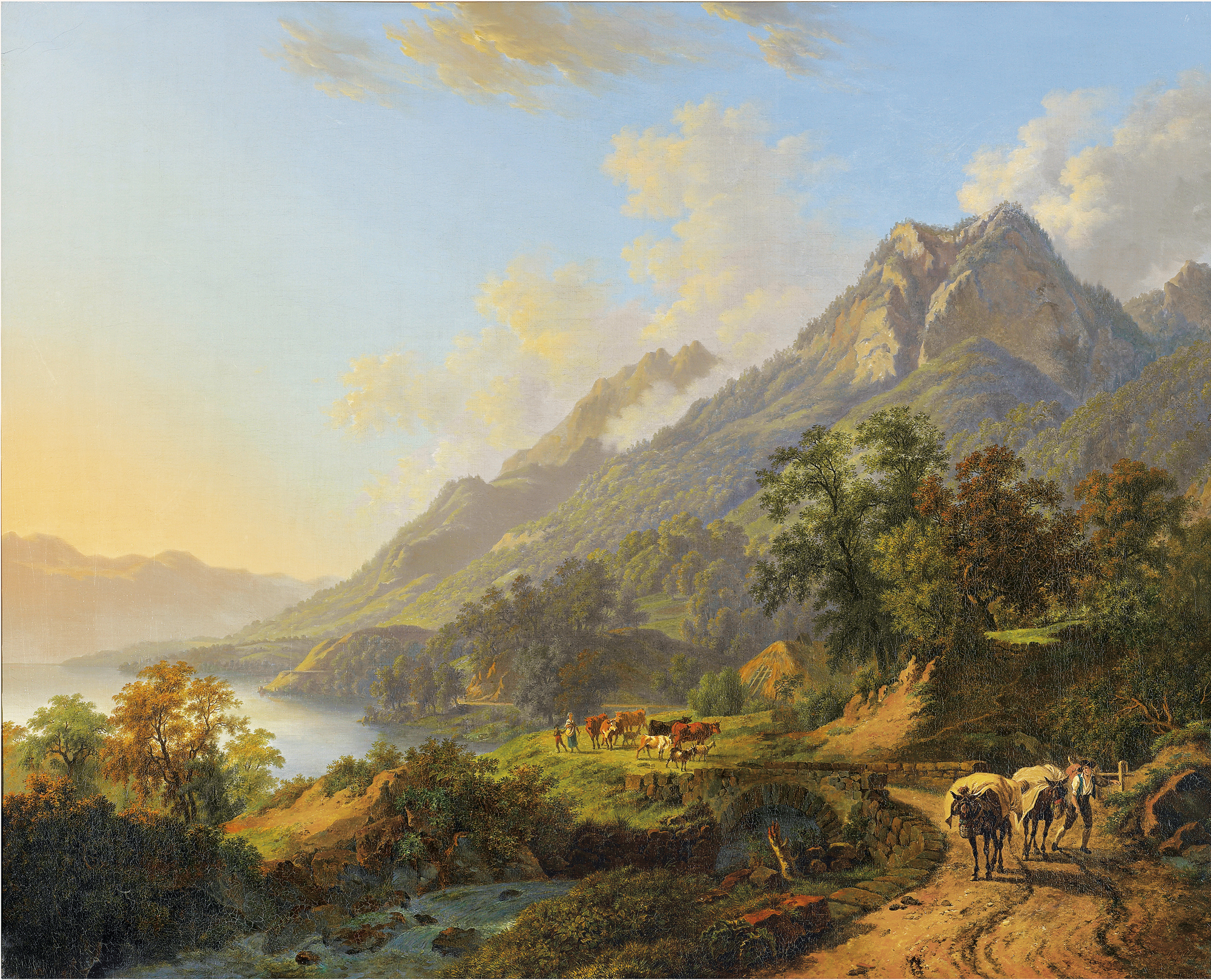The son of a Protestant minister, Pierre-Louis De la Rive is born in 1753 in Geneva. He begins studies in law but abandons them and in 1770 takes up copying Dutch and Flemish paintings in various private collections in Geneva, under the tutelage of Nicolas Henri Joseph de Fassin, a painter from Liège.
In Dresden De la Rive’s encounter with the work of the French painter Claude Lorrain prompts him to give up copying and start creating his own landscape compositions. Following a trip to Italy, he begins painting “composed landscapes” in the neoclassical style, a synthesis of idealised sites and realist motifs imbued with the influence of Claude Lorrain. De la Rive works in two phases, i.e., doing drawings on site, then organising them on the canvas in an ideal view of nature as the 17th century had already imagined it.
De la Rive favours the bucolic character of sites around Lake Geneva bathed in an Italianising light. Eventually bankrupted and driven out of France in 1794 by the Revolution, he emigrates to Bern, sets off again for Paris and returns to Geneva around 1800. From then on he concentrates on painting alpine landscapes that blend a regard for topography with a neoclassical aesthetic.
Without realising it, De la Rive becomes the initiator of alpine painting in Geneva with his daring Vue du Mont-Blanc prise des environs de Sallanches au soleil couchant (View of Mont-Blanc Depicted from around Sallanches in the Setting Sun – 1802, Musée d’art et d’histoire), in which for the first time a mountain constitutes the main subject of a picture. He paves the way for a school of a painting that will be notably include W.-A. Töpffer, François Diday and Alexandre Calame.
In Dresden De la Rive’s encounter with the work of the French painter Claude Lorrain prompts him to give up copying and start creating his own landscape compositions. Following a trip to Italy, he begins painting “composed landscapes” in the neoclassical style, a synthesis of idealised sites and realist motifs imbued with the influence of Claude Lorrain. De la Rive works in two phases, i.e., doing drawings on site, then organising them on the canvas in an ideal view of nature as the 17th century had already imagined it.
De la Rive favours the bucolic character of sites around Lake Geneva bathed in an Italianising light. Eventually bankrupted and driven out of France in 1794 by the Revolution, he emigrates to Bern, sets off again for Paris and returns to Geneva around 1800. From then on he concentrates on painting alpine landscapes that blend a regard for topography with a neoclassical aesthetic.
Without realising it, De la Rive becomes the initiator of alpine painting in Geneva with his daring Vue du Mont-Blanc prise des environs de Sallanches au soleil couchant (View of Mont-Blanc Depicted from around Sallanches in the Setting Sun – 1802, Musée d’art et d’histoire), in which for the first time a mountain constitutes the main subject of a picture. He paves the way for a school of a painting that will be notably include W.-A. Töpffer, François Diday and Alexandre Calame.

